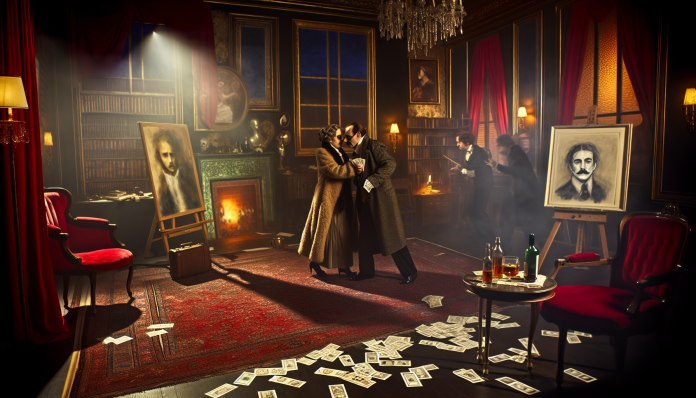The Notorious Love Life of Edith Piaf: Passion, Pain, and Affairs
Edith Piaf, the legendary French singer and cultural icon, captivated hearts with her haunting voice and poignant lyrics. Born in 1915, her tumultuous life was marked not only by her extraordinary musical achievements but also by an equally extraordinary love life that has become the subject of gossip and scandal. At a time when moral attitudes were beginning to shift but still held traditional views tightly, Piaf’s passionate affairs peeled back the layers of societal expectations, revealing a more complex, intimate portrait of a woman living life on her own terms.
The Scandal
Piaf’s romantic affairs were notoriously public, particularly her tumultuous relationships with famous figures such as boxer Marcel Cerdan and actor-turned-Director Yves Montand. Cerdan, who was a married man, became Piaf’s greatest love. Their affair blossomed in the early 1940s and was as intense as it was tragic; Cerdan died in a plane crash in 1949 while on his way to see her, leaving Piaf devastated. Their passionate bond fueled not just her music but public fascination, as the love letters and passionate missives exchanged between the two were meticulously chronicled by the media of the time.
But it wasn’t just Cerdan. Piaf’s relationships with a series of men, including Montand, who was also married, further scandalized Parisian society. Montand’s affair with Piaf developed in the late 1950s, amidst the growing countercultural shifts of post-war France. Their relationship shocked many due to its open nature and the way it defied traditional gender roles. According to Montand’s biographer, the affair was marked by jealousy and fiery exchanges, capturing the attention of tabloids eager to weave the fabric of Parisian romance and intrigue.
Quotes from Piaf herself provide insight into her views on love and fidelity: “Love has no boundaries,” she famously said, echoing her disdain for societal norms. However, her passionate liaisons were often marred by heartbreak, addiction, and the pressures of fame.
Moral and Cultural Analysis
The societal response to Piaf’s affairs was mixed. On one hand, many admired her fierce independence and refusal to conform; on the other, they criticized her as a reckless flame, endangering her career and personal happiness. The French press of the time indulged in the details of her relationships, shifting between adoration and condemnation, often portraying her as both a tragic heroine and a reckless seductress.
Key cultural figures recognized Piaf’s role as a pioneer for women in a period when women’s autonomy was increasingly challenged yet celebrated. The juxtaposition of 1940s and 1950s French social mores—a blend of emerging liberal attitudes set against conservative expectations—created a combustible atmosphere for Piaf’s life and loves.
Fast forward to contemporary society, where discussions around sexuality, fidelity, and personal agency have evolved. Public opinion today would likely view Piaf’s affairs with a more nuanced lens, celebrating her independence rather than vilifying her as a mere lover of married men. The exploration of relationships outside the confines of marriage is more accepted, and the scrutiny applied to prominent female figures has lessened, allowing for a greater appreciation of their complexities.
In modern times, Piaf’s legacy would be enriched rather than diminished by her romantic entanglements. She would likely be seen as a figure of empowerment, one who navigated the challenges of love and fame with a raw, unapologetic spirit, an emblematic representation of the shifting cultural landscape—one that celebrates both the artist and the person behind the art.

